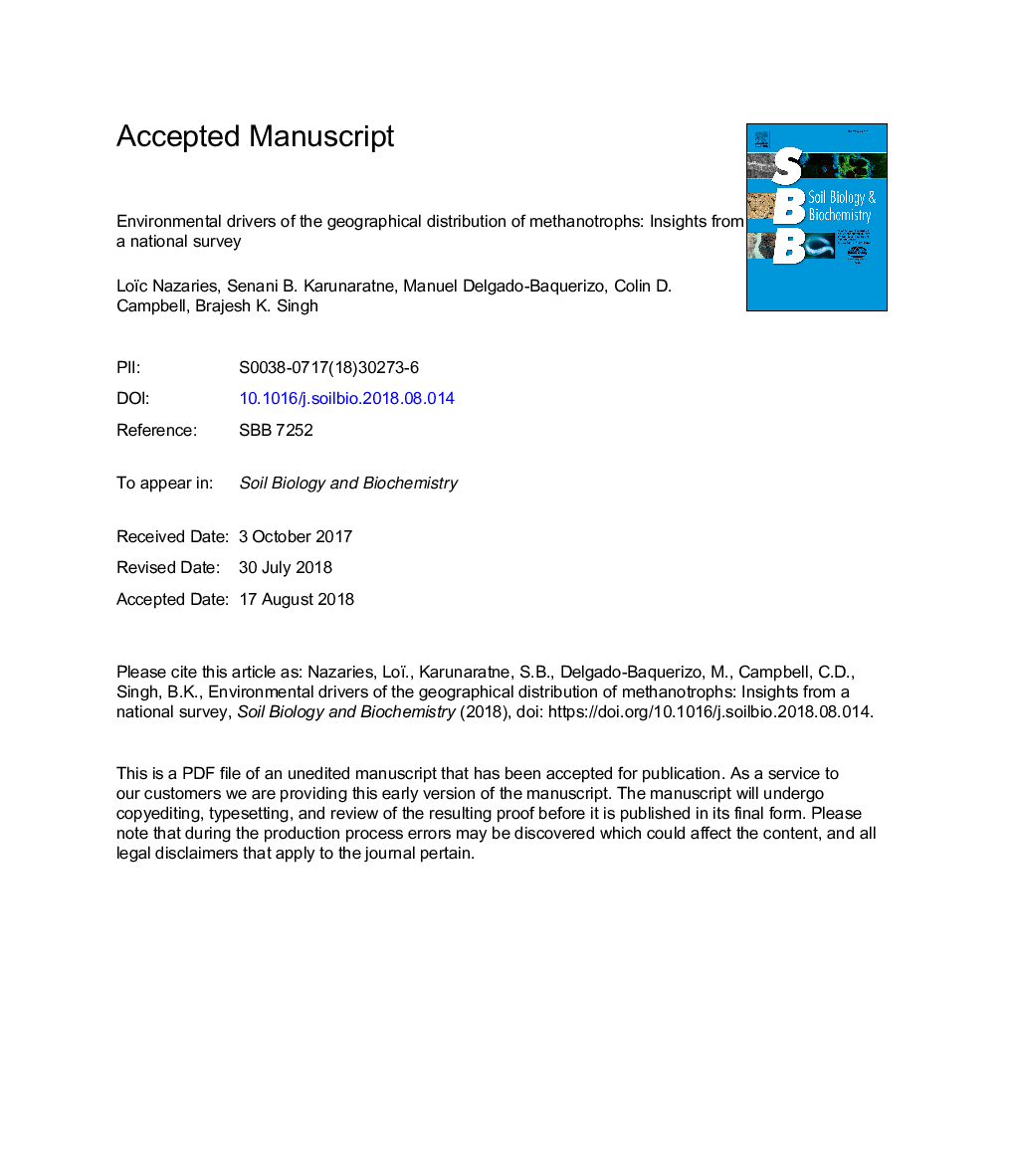| Article ID | Journal | Published Year | Pages | File Type |
|---|---|---|---|---|
| 11026009 | Soil Biology and Biochemistry | 2018 | 67 Pages |
Abstract
There is considerable evidence that environmental properties are important for microbial niche partitioning in general. However, little is known about the environmental factors explaining this for soil methane-oxidising bacteria (or methanotrophs), which play an essential role in ecosystem functioning and climate regulation through mitigation of net CH4 emissions worldwide. This knowledge gap limits the inclusion of taxon-based information to improve predictions of climate change-simulation models. In this study, 697 soil samples were collected across Scotland and 62 climo-edaphic properties were analysed. Combined with a set of hybrid geostatistical modelling approaches, the aim of this study was to investigate the biogeographical distribution (pmoA gene relative abundance) of key methanotrophic operational taxonomic units named Terminal-Restriction Fragments (T-RFs) and of methanotrophic community structure. The main objectives were to: 1) identify major environmental drivers influencing the distribution and composition of methanotrophs; and 2) perform spatial modelling and mapping of soil methanotrophic community assemblage and distribution of those dominant T-RFs. Herein, it was hypothesised that the assemblage of methanotrophic community and distribution of key populations across various landscapes could be predicted using a range of climo-edaphic factors optimised for spatial, climate and terrain attributes. The findings presented here suggest that the distribution of methanotrophs is strongly linked to land use and some edaphic properties, predominantly soil moisture/rainfall, nutrients and metal ions. The hybrid geostatistical approach allowed for spatial prediction of methanotrophic T-RFs and community, and demonstrated a clear niche partitioning between dominant T-RFs. Overall, these results provide novel evidence that the distribution of methanotrophs could be explained and mapped in terms of niche partitioning and predicted at the regional scale. The findings of the present study have significance for the sustainable management of ecosystems and improvement of simulation models for better prediction of ecosystem functions under predicted global changes.
Related Topics
Life Sciences
Agricultural and Biological Sciences
Soil Science
Authors
Loïc Nazaries, Senani B. Karunaratne, Manuel Delgado-Baquerizo, Colin D. Campbell, Brajesh K. Singh,
